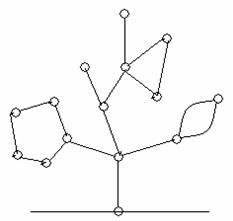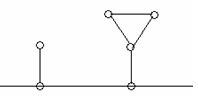当前你的浏览器版本过低,网站已在兼容模式下运行,兼容模式仅提供最小功能支持,网站样式可能显示不正常。
请尽快升级浏览器以体验网站在线编辑、在线运行等功能。
3710:Christmas Game
题目描述
Harry and Sally were playing games at Christmas Eve. They drew some Christmas trees on a paper:

Then they took turns to cut a branch of a tree, and removed the part of the tree which had already not connected with the root. A step shows as follows:

Sally always moved first. Who removed the last part of the trees would win the game.
After a while, they all figured out the best strategy and thought the game was too simple for them. Harry said, “The Christmas trees should have some gifts in them!” So Sally drew some gifts (simple polygons) in the initial trees:

You may assume the initial picture is a tree with some simple polygons, in which each edge is involved in at most one polygon. We also know that every polygon has only one node involved in the main tree (the hanging point of the giftJ) .In every sub-tree (connected subgraph), there was one and only one node representing the “root”. According to these assumptions, following graphs will never appear:

Sally and Harry took turns (Sally was always the first person to move), to cut an edge in the graph, and removed the part of the tree that no longer connected to the root. The person who cannot make a move lost the game.
Your job is to decide who will finally win the game if both of them use the best strategy.
输入解释
The input file contains multiply test cases.
The first line of each test case is an integer N (N<100), which represents the number of sub-trees. The following lines show the structure of the trees. The first line of the description of a tree is the number of the nodes m (m<100) and the number of the edges k (k<500). The nodes of a tree are numbered from 1 to m. Each of following lines contains 2 integers a and b representing an edge <a, b>. Node 1 is always the root.
输出解释
For each test case, output the name of the winner.
输入样例
2 2 1 1 2 4 4 1 2 2 3 2 4 3 4
输出样例
Sally
提示
The sample graph is

最后修改于 2020-10-29T07:08:43+00:00 由爬虫自动更新
共提交 0 次
通过率 --%
| 时间上限 | 内存上限 |
| 1000 | 65536 |